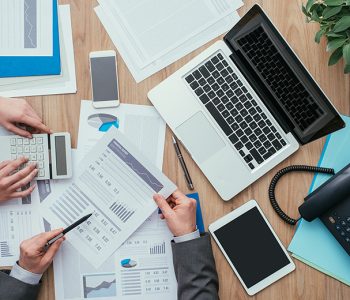 Blog
Blog
Practical Steps to Safeguard Your Business from Embezzlement and…
- by QuickBook
Practical Steps to Safeguard Your Business from Embezzlement and Theft

Embezzlement and theft can pose serious threats to the financial health and reputation of any business. The difficult question can be, what safeguards will help keep my business safe? It is a difficult issue to address because it involves the complexity of human trust. However, it’s not impossible to prevent and discourage. Below are ten practical implementations of safeguards against embezzlement and stealing.
-
Establish Segregation of Duties
Practical Implementation:- Separate Financial Roles: Assign different employees to handle invoicing, payments, and reconciliation. For example, the person preparing invoices should not be the same person approving or processing payments.
- Rotational Duties: Rotate financial responsibilities among staff periodically to prevent one individual from maintaining exclusive control over sensitive processes.
-
Conduct Regular Audits
Practical Implementation:- Scheduled Internal Audits: Create a monthly or quarterly schedule for internal reviews of financial records, focusing on high-risk areas like petty cash and expense reimbursements.
- External Auditors: Partner with an independent audit firm to conduct annual reviews. External auditors bring impartiality and often identify issues that internal teams might overlook.
-
Monitor Financial Transactions with Technology
Practical Implementation:- Accounting Software: Use software like QuickBooks or Xero, which offer built-in fraud detection, reporting, and transaction monitoring features.
- Transaction Alerts: Set up notifications for large or unusual transactions. For example, receiving an alert for payments over a specified threshold can prompt immediate review.
-
Enforce Dual Authorization
Practical Implementation:- Bank Transactions: Require two authorized signatories for any bank transaction exceeding a certain amount.
- Expense Approvals: Use approval workflows in expense management systems, where managers must review and sign off on employee reimbursements.
-
Secure Physical and Digital Assets
Practical Implementation:- Access Controls: Restrict access to sensitive areas, such as cash drawers and safes, using keycards or biometric scanners.
- Data Security: Implement password policies that require regular updates and use multi-factor authentication (MFA) for accessing financial systems.
-
Train Employees on Fraud Prevention
Practical Implementation:- Workshops and Seminars: Organize regular training sessions on identifying fraud, reporting suspicious activity, and understanding company policies.
- Documentation: Provide employees with a handbook outlining procedures for handling financial data, cash, and inventory.
-
Implement a Whistleblower Policy
Practical Implementation:- Anonymous Reporting Tools: Use platforms like EthicsPoint or a simple suggestion box to allow employees to report concerns anonymously.
- Follow-Up Procedures: Develop clear steps for investigating reports, ensuring that whistleblowers are protected and their concerns are addressed promptly.
-
Monitor Lifestyle Changes of Employees
Practical Implementation:- Red Flag Indicators: Pay attention to employees displaying sudden unexplained wealth or financial difficulties, but ensure observations are handled discreetly and respectfully.
- Open Communication: Create a supportive environment where employees feel comfortable discussing personal challenges, reducing the temptation for unethical actions.
-
Conduct Background Checks
Practical Implementation:- Pre-Employment Screening: Check references, criminal records, and financial history for prospective hires, especially those applying for roles involving financial responsibilities.
- Ongoing Checks: Periodically review employees in sensitive positions to ensure continued compliance with company standards.
-
Foster a Transparent Workplace Culture
Practical Implementation:- Open Forums: Hold regular team meetings where employees can discuss concerns, share ideas, and provide feedback.
- Recognition Programs: Reward employees for ethical behavior and adherence to company policies, reinforcing a positive culture.










